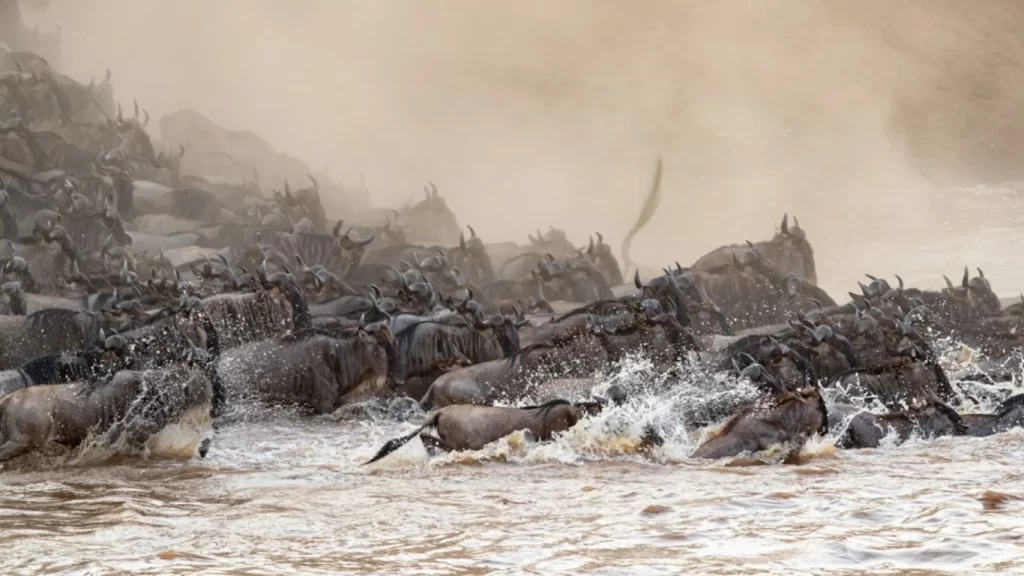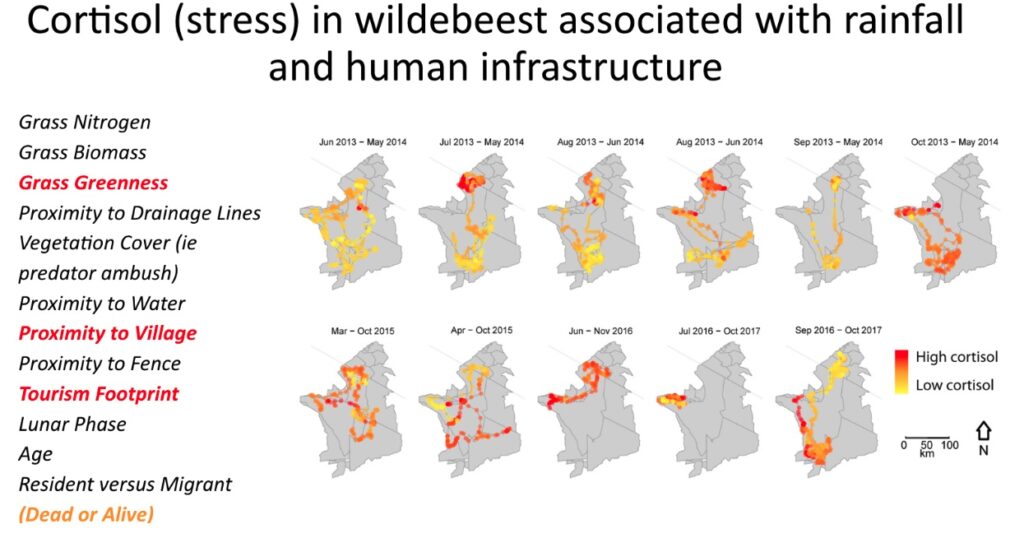
The Migration Under Strain: Viral Moments Reveal the Need for Change
Recently, international headlines have raised concerns: one of nature’s greatest spectacles, The Great Wildebeest Migration is increasingly under pressure.
In July, photographer Nick Kleers captured a concerning scene that went viral. His footage shows a long line of safari vehicles crowding the banks of a river crossing, with several tourists stepping outside their cars. This kind of behaviour not only violates park regulations but also places unnecessary stress on wildlife and undermines efforts to protect the integrity of the ecosystem.
Soon after, a TikTok video shared by Sauti TV showed a similarly alarming moment near Purungat Bridge, where wildebeest were unable to cross due to blocked passage and forced back in distress.
These viral videos are not isolated incidents but part of a troubling pattern. They highlight a growing reality: unmanaged tourism carries the potential to threaten the very spectacle that draws people from across the globe.
What the Science Tells Us
At our annual Serengeti Symposium in March, Dr Grant Hopcraft, head of our Science Committee, presented data from a large group of scientists working in the Serengeti-Mara on how the migration is shifting.
The findings are clear:
- Wildebeest are now spending around 35 days fewer days in the Maasai Mara and more time in areas such as Maswa Game Reserve, Grumeti-Ikorongo and the Ngorongoro Conservation Area.
- Tourism presence directly influenced wildebeest behaviour in 20% of the river crossings. Crowds and vehicles can cause herds to hesitate, divert or abandon crossings altogether- a change with potentially serious ecological consequences.
- Where tourism footprint exists, stress levels in wildebeest are measurably higher, as shown through elevated cortisol.

Why This Matters
If we want future generations to witness the migration, we must act now. Tourism is a vital source of income for both Tanzania and Kenya but without careful management, it risks undermining the very resource it depends on.
Some solutions include:
- Re-evaluating and placing restrictions on the number and placement of tourist infrastructure.
- Limiting the number of vehicles allowed at sensitive locations, particularly river crossings.
- Geographical diversification to redistribute tourism investment and visitation across more areas of Tanzania and Kenya.
These and other recommendations can be found in the summary of conclusions from this year’s symposium.
We must continue to protect this magical place for future generations. Serengeti Forever!
